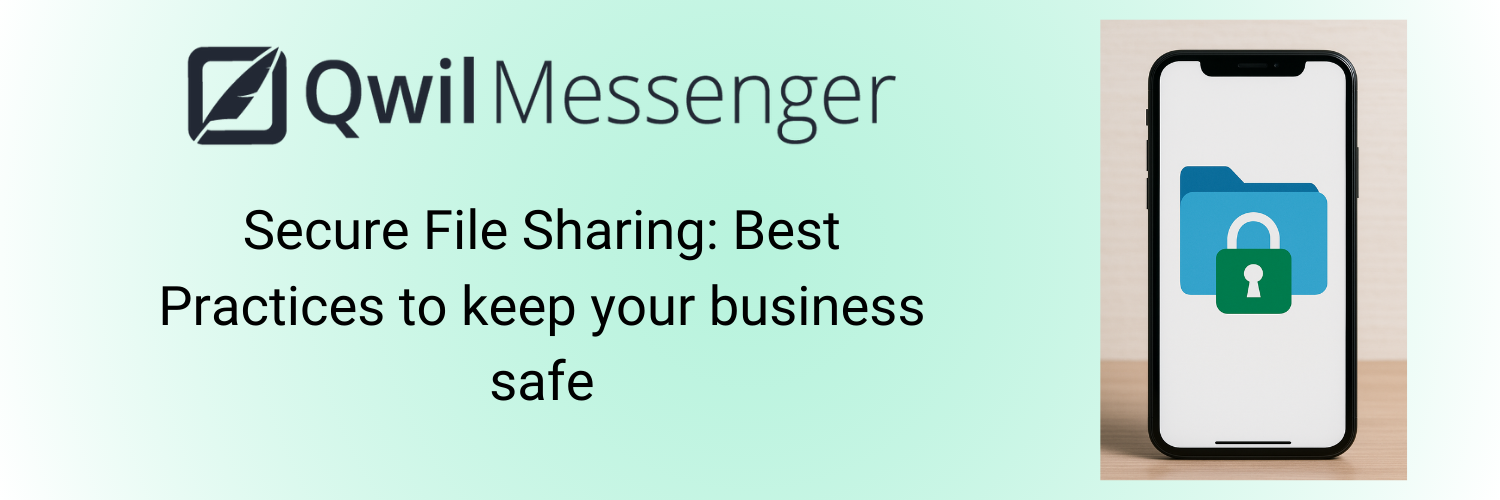Best Practices for Secure File & Document Sharing in Today’s Digital World

Introduction to Secure Document Sharing
Secure document sharing is key for businesses in many industries. So what is the need for it you may ask. Well when a business is transferring private info, either personal, financial or medical, there are many opportunities for highly confidential information to be leaked.
Historically email was the relied upon channel for companies. We now live in a time where 96% of phishing attacks start from email. The vast majority of data breaches and cyber attacks in all aspects start from email.
However in the era of technology, there are plenty of tools that can make this process easy. Meaning that you can protect your files, reputation and customers from harm.
Understanding File Security and why it matters
File security is the topic around protecting files from unauthotirized viewing and leaking data. To make sure that your file security holds strong, encryption, 2 factor authentication and many other techniques can be used.
The file security can be set on an single document level, or through a platform in which the files are uploaded. Understanding these levels of file security, and access control, is key to knowing what is needed from your business.
Common methods are passwords, strong levels of encryption, and creating access control protection.
File Type Considerations
Different file types have different capabilities for security. If you do a little digging you will discover that PDF files, can be password protected as well as encrypted. And can then be shared with just a link. Generally these files when shared also have stringent expiration dates. so that these links cannot be found and used by others in future.
Each file type has it's own security needs. Be sure you have checked what the best way to share your files are.
Password Protection for Sensitive PDF Files
Password walling files is a solid option. No matter what your documents contain. Sharing a password securely with the intended recipient or client can be a easy way to get those files across.
So now consider this from a client experience perspective. Having to receive an encrypted link, and an encrypted password, or even requiring a phone call to share the password, can be a big blocker. Not only do you have two tasks now instead of one, but now you actually need to be available at the same time with the sender.
For this reason, password protection, despite being functional for companies sending PDFs, isn't the most optimum solution.
Securely Sharing PDF Files with Qwil: The solution
At Qwil we have brought a solution that ticks all the boxes. Combining security with user experience. Our preferred channel of communication in general is instant messaging. We have mixed this preference with the capability to securely send documents with internal and external users. That being staff members and clients of your business.
The platform is 2FA, meaning all user's identities are confirmed. Once a user identifies their identity our banking grade security platform, they are kept logged in. Only with appropriate access control on their device. Meaning no worrying about complicated account reset issues. You also always can be assured the files are going to the intended recipient.
If you are on the PC or mobile you can simply drag and drop or click attach to send any level of secure communication with your users. compliant with HIPAA, GDPR and ISO certifications. All document storage is encrypted both at rest and in transit. All you need to do is drag and drop into the box. We take care of the rest
Users can send documents securely as if they were using a social platform, like Whatsapp or facebook messenger. Except maintaining full security in all attachments and messages.
Security set up is flexible on Qwil. Control who can save or download attachments to their device. By knowing only some users can save secure data, you can ensure your compliance with your regulatory body.
Try Qwil today for the easiest way to share secure documents.
Why Can't I Use Gmail or Outlook to Send my PDFs?
In short, you can. But this is not the only element you need. These platforms have specific security settings which need to be activated so that the files are safe from all potential risks. People have long used encrypted email for sending these kind of files.
So where do the problems come in? Encrypted emails generally require a lot of single use access control from the recipient side. This means that users need to store their passwords and logins, for one very specific task to download their documents.
If a user forgets their login, this can be an absolute nightmare to regain. In areas such as finance, medical practices and the legal sector, this is a very common friction point. This is a big reason way many organisations now do not use Gmail or outlook for sharing secure documents.
There is also a significant risk that your clients will not encrypt their responses.
Sending Documents Securely with Document Portals like Dropbox
Sending documents securely through a portal is another option. There are many portals online that act as document storage and allow users to download their files. Once you and your recipients have accounts, you can upload them to these portals, like dropbox, and the files can be accessed.
This again uses encryption measures, such that you can send files to your clients or colleagues without allowing for any data issues.
This is dependant on users creating accounts on both sides, as well as security configurations. Also remembering passwords and logins, and the encryption ability of the platform. You can again run into issues with these kind of single function applications.
If something has only one job, then it is part of a larger list of applications. This means that users have even more passwords to remember. This has historically been the issue with platforms like dropbox.
Collaborative Work and Security
Many don't consider the collaborative work element of this topic. Documents need to be protected not only when sending externally. They also must be secure when sent within an organization. Sharing files with your colleagues is a big feature of the modern work place. Creating a safe and easy way to do so is now key for all your staff.
Some tools like Google drive are ok for internal security. If configured correctly. And also act as a viable collaboration tool.
As soon as the document leaves your organisation is when we see the problems. Passwords on a PDF file do very little if you send the password and document to the wrong person. The same goes for your internal encryption when sending externally. That is why a 2FA feature is so key now.
All of these tie in to proper following of your compliance regulation.
Remote Work and Security
Another element, not so considered, is remote working. Since COVID and the modern era of working from home, there is a whole new risk to your private information. You need to add appropriate security measures.
But fear not, this issue can be solved. Remote access tools like VPNs and remote desktops do a relatively good job of fixing this one. However do not get lazy. If you allow remote working then you must consider monitoring and incident response policies.
Conclusion
Sending documents securely to clients, or collaboration with colleagues, is a critical part to all organisations dealing with sensitive information. Whether you are in the legal, financial, medical or any other sector dealing with confidentiality.
Many companies use secure tools to keep this data safe. The danger is when there are too many tools. All doing one job. A data breach is your worst nightmare, but what if your client's cant even get access to your documents?
That is where Qwil comes in. You can protect all your organization's sensitive data as well as your client experience. Share secure documents, secure e-signatures, and secure messages all in the same platform. As well as hosting video calls, scheduling meetings and much more. Drop single use tools for the all in one client communication platform today and get your Qwil journey underway.
